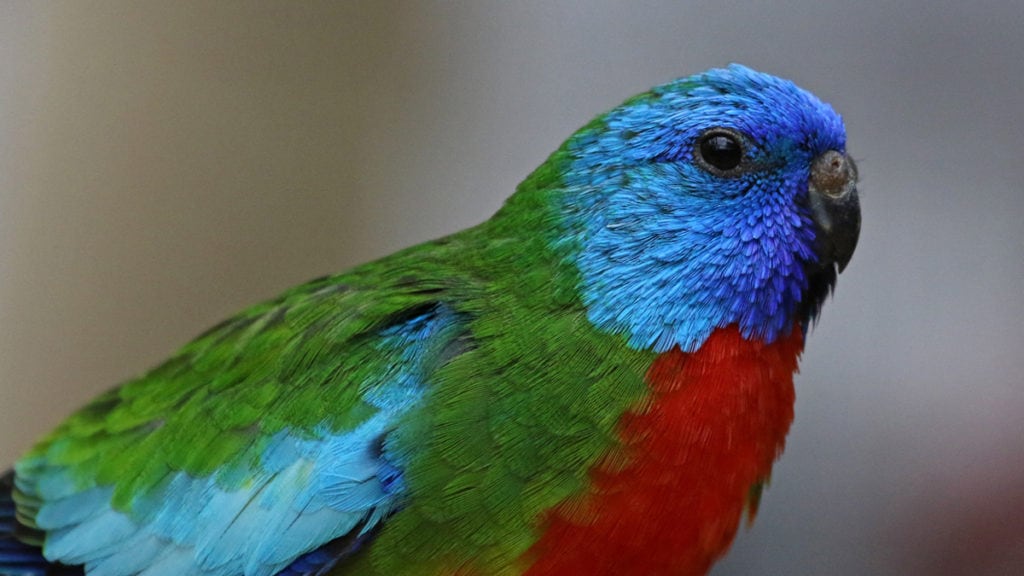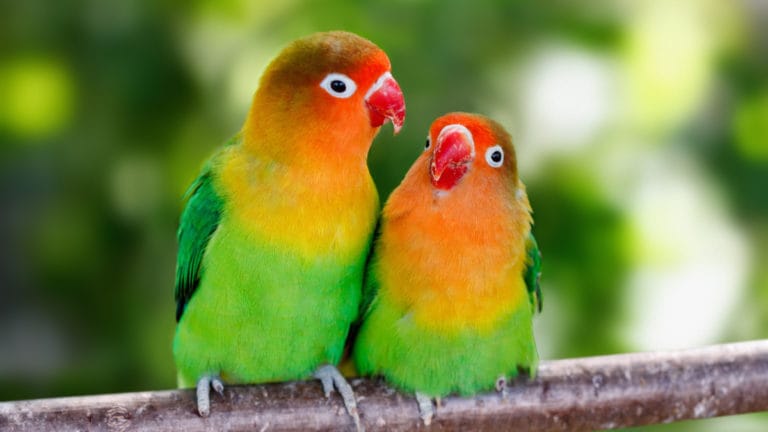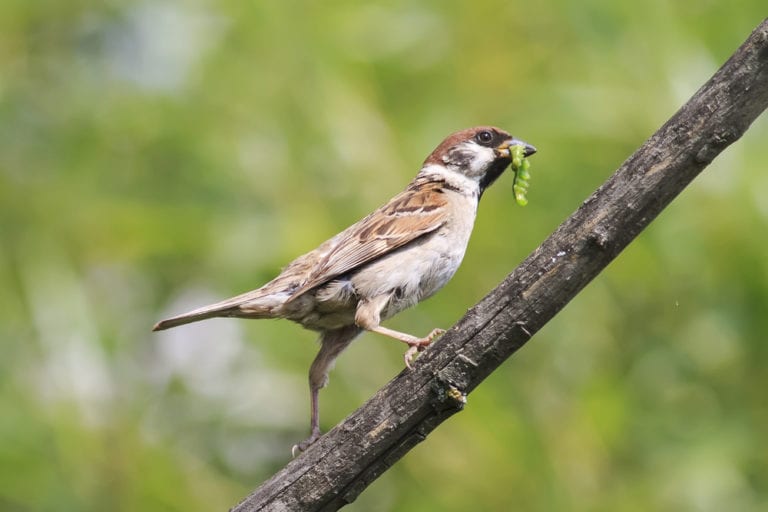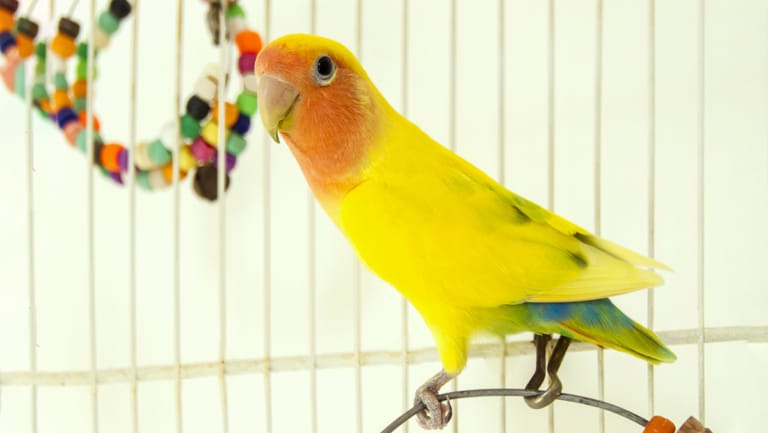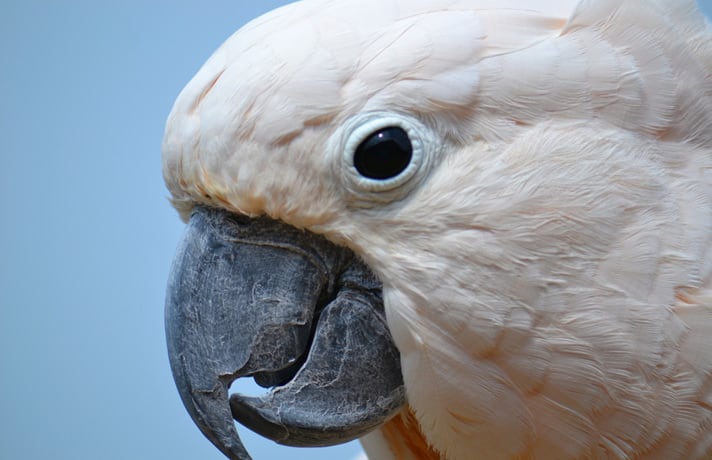1. Why Are They Called Grass “Keets”?
Grass parakeets are Australian parrots with small, slender bodies and long tails (thus the name parakeets). Almost all of them have a grass-green back, which blends in with the ground where they flock to forage for grass seeds, flowers, nectar, fruit and small insects. The exception is the Bourke’s parakeet whose earth-colored plumage camouflages it well in the desert areas it inhabits. Grass parakeets also have other colors, such as ultra-marine blue, powder blue, yellow and scarlet-red.
The Australian grass parakeets are in the genus Neophema and include:
- Blue-winged parakeet (Neophema chrysostoma)
- Elegant parakeet (Neophema elegans)
- Rock parakeet (Neophema petrophila)
- Orange-bellied parakeet (Neophema chrysogaster)
- Turquoise parakeet (Neophema pulchella)
- Scarlet-chested parakeet (Neophema splendida)
The Bourke’s parakeet is in its own genus, Neopsephotus. Being entirely ground feeders and mostly seed eaters, they are known as “grass parakeets” in Europe and America. Curiously enough, Australians do not use this expression to describe them, preferring to call them by their genus name: Neophema parrots.
2. How Are They Compared To Other Pet Parrots?
Grass parakeets are quiet and unobtrusive by nature. In the wild they are so calm that they will let people get close to them when feeding. This trusting nature combined with their natural curiosity leads even non-handled breeding pairs to become friendly.
As pets, they are quiet and are ideal birds for apartments. Their tiny beaks do little damage, unless they are housed in a planted aviary. Then, like little feathered termites, they will chew the greenery, reducing it to a bunch of sticks.
Grass parakeets are happiest when kept as a single pair in a large flight cage or housed in a large community aviary with other peace-loving small birds, where they are just fantastic to observe.
Compared to other pet birds, grass parakeets are a bit fragile and need special care to live their full life span of about 10 years.
3. Can Grass Parakeets Talk?
The only noise these quiet little parakeets make is a twittering in a gentle, melodic voice a few times a day. Early naturalists noticed this distinctive feature and named them Neophema, which means “new voice.” But this soft voice means they don’t have good talking ability. The ones that learn to talk will do so in a soft voice that is not very clear.
4. Do they thrive on a pellets or seed?
There are a big variety of pellets on the market today that meet the grass parakeet’s diet requirements perfectly. Plenty of these small birds are fed an all-pellet diet with good results.
Grass parakeets eat at least 11 different seeds and more than 60 food items in the wild, so they thrive on a seed diet of cockatiel mix, supplemented with canary seed and leafy greens, sprouts, broccoli, carrots, corn and apple. They enjoy small pieces of grainy or nutty bread, because they love picking out the seeds and grains.
5. What Types Of Bird Toys Do Grass Parakeets Like?
Aside from flying and feeding, grass parakeets typically like to run up and down their perches or fly back and forth between them. Interesting perches, branches and swings can keep them pretty busy. They enjoy anything that involves food, like spray millet hanging from the top of the cage or treats for smaller sized birds. Small budgie toys are ideal entertainment for them.
6. Should I Trim A Grass Parakeet’s Wing Feathers?
Grass parakeets do best with full flight. Their disproportionally short legs and small feet are not suitable for lots of climbing, just as their tiny beaks are not big enough to have a good grip on anything bigger than a toothpick. Since these are ground-loving, small birds, a wing-feather trimmed grasskeet will often end up on the ground where it can easily be overseen and stepped on, or hurt by a pet dog or cat. It is always preferable to keep them in full flight and give them supervised flight time or house them in large cage.
7. How Do Grass Parakeets Like To Interact?
The grasskeets are not known to be very active or boisterous like the typical budgie. They are the most lively at feeding times tending to be more sedentary at other times. Pairs do not preen each other, which doesn’t make them naturally affectionate pets. If someone is looking for an extroverted, chatty, demonstrative pet bird, then the Neophema is not a good choice.
However, if desiring a calm, small bird, the popular Bourke’s parakeet may fit the bill. They are the most commonly kept pet of all the grass parakeets because they are sweet-natured and gentle with children. Even parent-raised Bourke’s are surprisingly tame. Because of its bright colors, the scarlet-chested parakeet is sometimes kept as a pet as well, though it is better suited to aviary life.
I have many customers that have a grass parakeet as a pet and think that is the most delightful bird they’ve ever owned and would not trade it for the world.
By Anne-Marie Harter Excerpt from BIRD TALK Magazine, May 2010 issue, with permission from its publisher, BowTie Magazines, a division of BowTie Inc.
Featured Image: Chris Hill/Shutterstock
Share:
